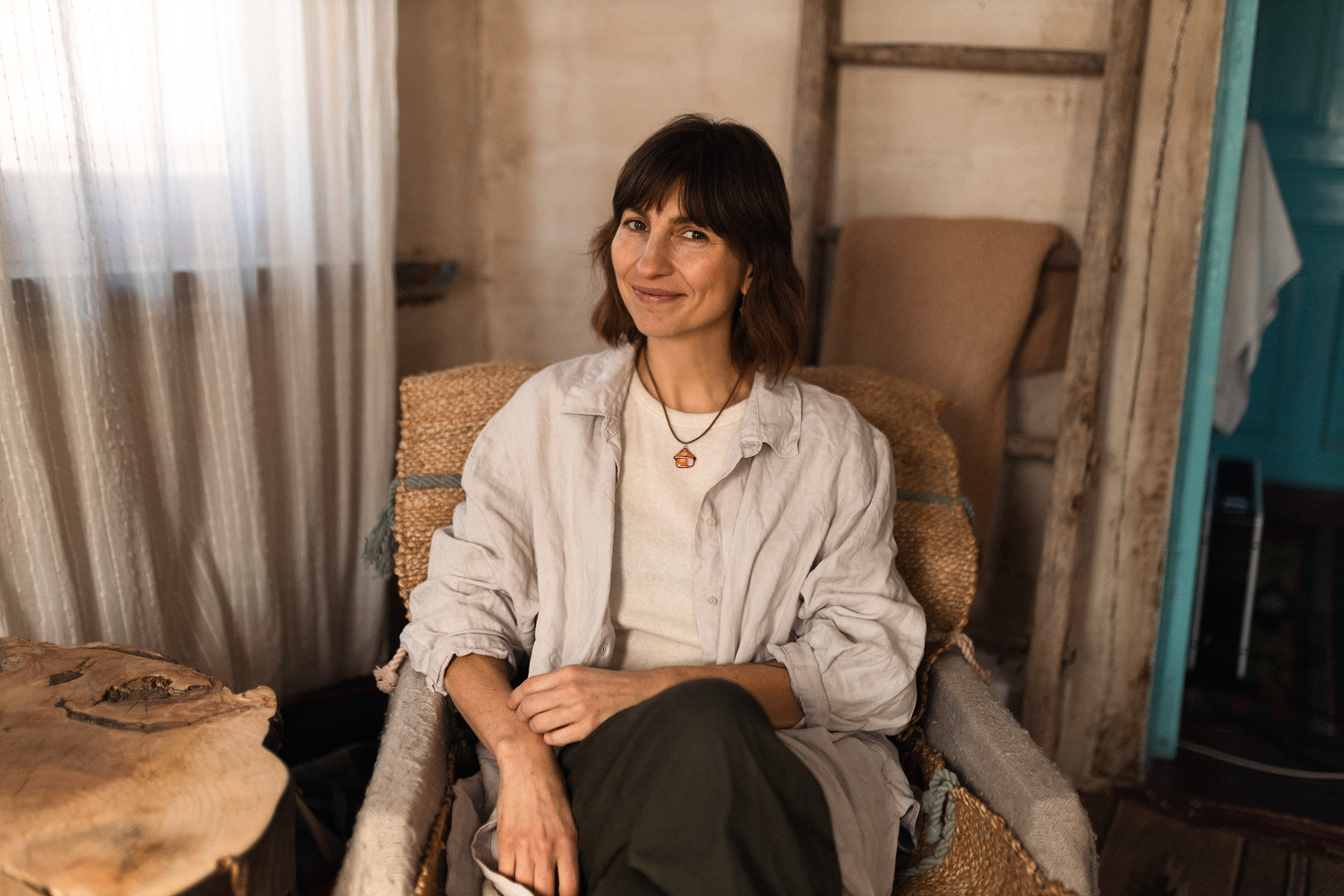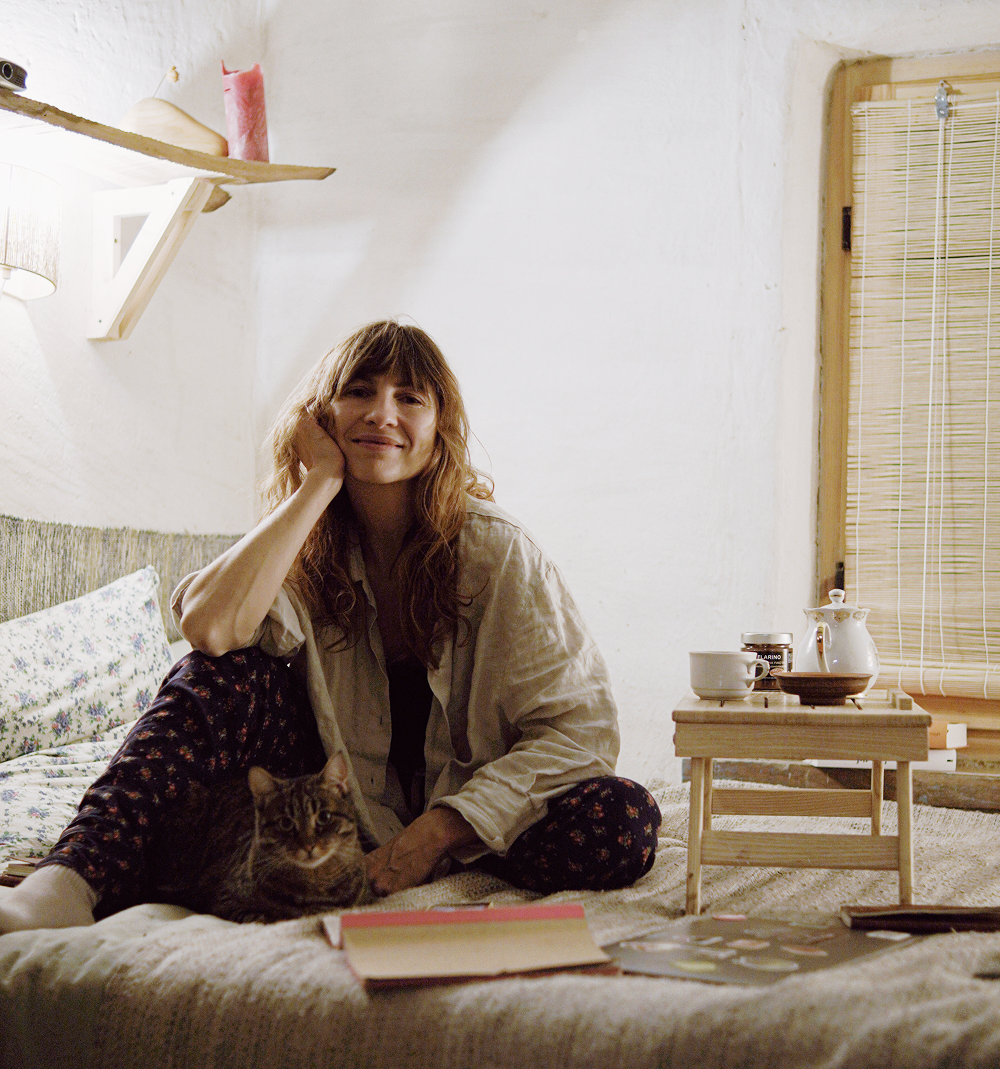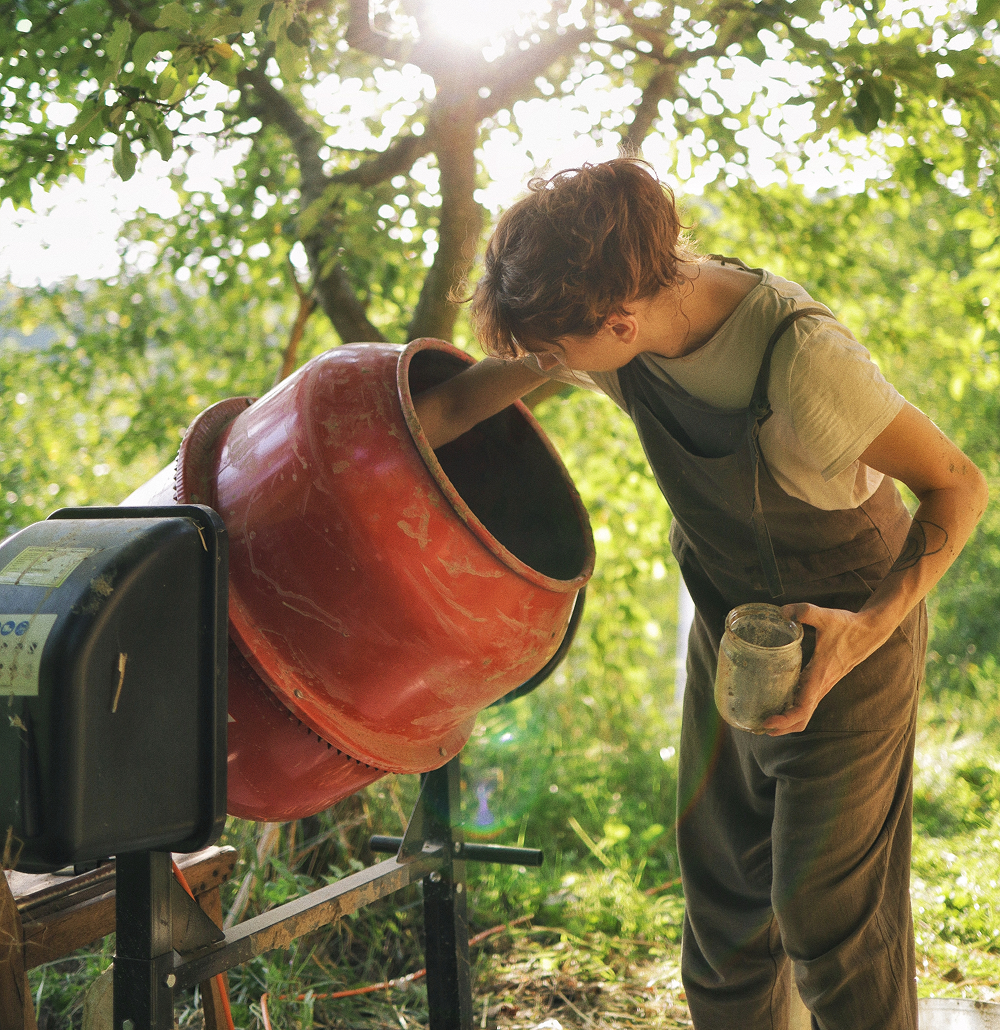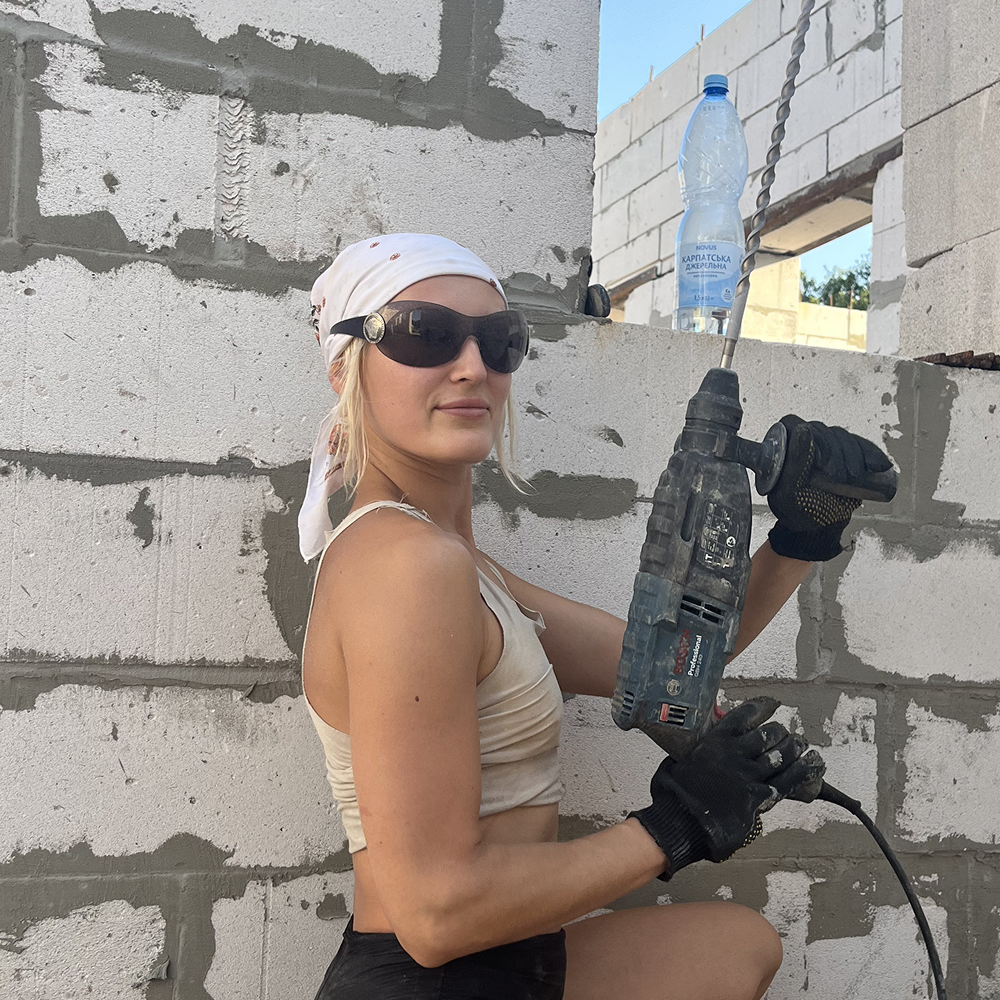Articles
November 14, 2025
Preserving heritage through clay: Natalia Suprun and the revival of the Ukrainian Mazanka
How the filmmaker and writer purchase, restore, and build Mazankas throughout Ukraine

Regularly ensure no new buildings or trees are casting shadows
Et tellus congue praesent pellentesque volutpat laoreet bibendum ut congue sed libero velit sed suscipit amet mattis orci aliquet egestas nibh quis neque vulputate convallis adipiscing magna. Mattis quisque in feugiat in metus laoreet sodales lectus id augue quis pellentesque feugiat luctus malesuada laoreet bibendum nibh augue fames feugiat diam sed. Varius ut eget sollicitudin sed semper sed semper sed nunc sagittis sit at sit.
- Euismod amet rutrum ornare egestas ac nunc ullamcorper mi pretium
- Mauris aliquet faucibus iaculis dui vitae litum sus ullamco
- Semper pharetra duis purus facilisis nec pretium imperdiet varius
- Molestie eget quis viverra eget eget pulvinar a donec vitae amet
Regularly check the energy output to identify any issues
Sed massa vestibulum lectus suspendisse egestas sit. Interdum vel scelerisque non imperdiet nec euismod enim tristique purus leo fames ut malesuada iaculis nunc ridiculus purus hendrerit mauris netus nunc arcu nulla hac parturient elementum proin. Malesuada commodo mi arcu sit adipiscing turpis nullam dignissim phasellus cras sagittis et sit blandit vestibulum vitae eget nulla vel dictum elementum in feugiat vel volutpat libero porta sed.

Have a professional periodically inspect and service the system
Nibh tellus arcu aliquam in pellentesque ultricies non nisi suspendisse laoreet est felis placerat bibendum nisl fermentum ut et eget lacus lectus aliquet egestas nullam suspendisse vulputate dictum tempus ullamcorper mattis ultrices suscipit ipsum vitae arcu est volutpat suscipit dolor gravida netus massa lacinia maecenas dictum facilisis eu.
- Ut est dui porttitor vitae diam cras faucibus urna diam proin ultrices
- Mauris aliquet faucibus iaculis dui vitae ullamco
- Sapien tempus nec scelerisque praesent mattis vitae commodo
- Justo at dictum fames condimentum nisl tellus mauris fermentum
Be cautious not to put stress on the panels
Nibh tellus arcu aliquam in pellentesque ultricies non nisi suspendisse laoreet est felis placerat bibendum nisl fermentum ut et eget lacus lectus aliquet egestas nullam suspendisse vulputate dictum tempus ullamcorper mattis ultrices suscipit ipsum vitae arcu est volutpat suscipit dolor gravida netus massa lacinia maecenas ictum facilisis eu.
“At scelerisque elementum vitae sed et posuere adipiscing est pulvinar id proin eget posuere odio dictumst mi interdum”
Prevent birds, rodents, and insects from nesting under panels
Sit nulla nec vitae odio orci phasellus metus diam leo est nisi morbi arcu vitae urna sit platea ligula non quis non aliquam in posuere mi egestas nunc ac vitae sed nunc auctor justo orci id ut neque ac nec. In quam eget volutpat urna consequat sit morbi tristique lobortis urna convallis lectus ac.
Follow all guidelines to maintain the warranty validity
Praesent magna turpis tellus nisl tortor est nisl nulla neque sed nisi enim cras in vitae aliquam. Posuere ultrices hac consectetur nulla odio at vitae egestas dis vestibulum risus amet viverra tortor tincidunt nascetur platea ultricies fermentum nibh nulla in lorem lectus adipiscing pretium sit condimentum nullam in eu in lorem cras proin.
Ukraine is undergoing a profound transformation. Amid the pressures of war and occupation, the nation is defending not only its sovereignty but also its cultural continuity — its architecture, traditions, and material heritage. Among the most symbolic embodiments of this resilience are mazankas — vernacular, eco-friendly houses constructed from locally sourced, natural materials such as clay, straw, and lime.
Beyond their ethnographic significance, mazankas represent a resistance model for contemporary reconstruction: they are thermally efficient, affordable, and quick to assemble, often within a single season, using resources literally drawn from the earth beneath one’s feet. Their materials — humble yet universal — are available across nearly all regions of Ukraine, making them both sustainable and culturally rooted.

Film director and writer Natalia Suprun, the owner of three mazankas in different parts of the country, reflects on ecological construction, the challenges of female builders, and the usability of traditional materials — even those as unexpected as horse manure.
Natalia’s story begins with a sense of longing — and loss.
“I always knew that I would buy a mazanka in Crimea, somewhere near the cliffs. I waited, I traveled, I grew older — and then russia occupied Crimea. After that, I lived in different cities. But the thought became obsessive: if I buy a mazanka, maybe I’ll feel at home again.”
With limited funds, she purchased her first mazanka for $1,000 in Cherkasy oblast — in a forested village she had never seen before.
Her first summer was one of enthusiasm and confrontation — with nature, with local skepticism, and with her own expectations.
“I was already environmentally conscious and short on money. So I searched for local, ecological methods of repair. I asked the neighbors, and they said: ‘Tear down that mazanka and build a normal house — from cinder blocks.’”
The combination of inexperience and harsh conditions soon tested her resolve.
“Inside, I made it beautiful. But outside… I dismantled part of a wall and found the supporting beams rotten and cracked. I sat down and cried. That was the end of my first mazanka season. I thought: maybe I’m not ready yet.”
Later, in the United States, Natalia’s engagement with Mazanka architecture took on new depth. She encountered practitioners of earthen construction and began studying sustainable building techniques.

“I learned about proportions, how to prevent moisture, cracking, and collapse. And with this knowledge, I knew: I need another mazanka.”
Returning to Ukraine, she bought a second house — again in the Cherkasy region, near her first.
“Let me clarify one thing right away: a Mazanka is not made of ‘sticks and dung.’ That’s a stereotype.”
Traditional Ukrainian Mazankas are diverse in structure and technique. Some consist solely of clay and straw; others integrate wooden frames or use straw-bale infill systems. Contemporary builders often adapt these vernacular principles with modern ecological methods.
Natalia typically works with:
- straw
- lime
- white clay
- sand
- horse manure — a key ingredient in the so-called “lazy plaster”
While manure can be substituted with other natural binders, Natalia notes its practical value:
“To avoid any smell, I pour boiling water over it and work immediately. If left overnight, there’s a faint odor — but it fades quickly. It’s not an issue.”

Natalia now builds using what she considers the most balanced method: a straw-bale structure coated with clay plaster.
“There’s a stereotype that mazankas are cold and fragile. But that comes from seeing neglected homes that decayed during the Soviet years. When built correctly and maintained, a mazanka can last for generations without constant repair.”
She highlights the advantages clearly: ecological and non-toxic, cost-efficient and locally sourced, excellent thermal performance, fully biodegradable, and producing no construction waste.
“You can build a home that, after a century, simply returns to the earth. It harms no one. It leaves no trace — only soil.”
Natalia has been renovating homes since she was 18 years old. Yet gendered perceptions persist.
“Once, in a hardware store, someone asked: ‘Who sent you here alone, little girl?’ I was 30. Sometimes men walk by my site, see me working, and wait for a man to answer their questions. Maybe it’s confidence. Maybe it’s resilience. Or maybe society really is changing.”

When I bought my first one, there was nothing fashionable about it. Now the demand has exploded. I’m sure this will grow further — just as natural building movements did in Canada and the U.S.”
For Natalia, Mazankas are no longer relics of the past but prototypes for a sustainable Ukrainian future — architecture as continuity, resistance, and regeneration.

Natalia’s plans reflect a fusion of heritage and innovation:
- A guidebook, How to Find Your Ideal Mazanka.
- An online educational course on Mazanka construction, co-developed with another eco-builder and a residency owner in Zakarpattia.
- The restoration of her grandmother’s 100-year-old home in the Poltava region, transforming it into a creative and recovery residency for writers, veterans, and artists.
“It’s a project of returning to the roots, — a personal and national architecture of renewal.”
Ukraine is undergoing a profound transformation. Amid the pressures of war and occupation, the nation is defending not only its sovereignty but also its cultural continuity — its architecture, traditions, and material heritage. Among the most symbolic embodiments of this resilience are mazankas — vernacular, eco-friendly houses constructed from locally sourced, natural materials such as clay, straw, and lime.
Beyond their ethnographic significance, mazankas represent a resistance model for contemporary reconstruction: they are thermally efficient, affordable, and quick to assemble, often within a single season, using resources literally drawn from the earth beneath one’s feet. Their materials — humble yet universal — are available across nearly all regions of Ukraine, making them both sustainable and culturally rooted.

Film director and writer Natalia Suprun, the owner of three mazankas in different parts of the country, reflects on ecological construction, the challenges of female builders, and the usability of traditional materials — even those as unexpected as horse manure.
Natalia’s story begins with a sense of longing — and loss.
“I always knew that I would buy a mazanka in Crimea, somewhere near the cliffs. I waited, I traveled, I grew older — and then russia occupied Crimea. After that, I lived in different cities. But the thought became obsessive: if I buy a mazanka, maybe I’ll feel at home again.”
With limited funds, she purchased her first mazanka for $1,000 in Cherkasy oblast — in a forested village she had never seen before.
Her first summer was one of enthusiasm and confrontation — with nature, with local skepticism, and with her own expectations.
“I was already environmentally conscious and short on money. So I searched for local, ecological methods of repair. I asked the neighbors, and they said: ‘Tear down that mazanka and build a normal house — from cinder blocks.’”
The combination of inexperience and harsh conditions soon tested her resolve.
“Inside, I made it beautiful. But outside… I dismantled part of a wall and found the supporting beams rotten and cracked. I sat down and cried. That was the end of my first mazanka season. I thought: maybe I’m not ready yet.”
Later, in the United States, Natalia’s engagement with Mazanka architecture took on new depth. She encountered practitioners of earthen construction and began studying sustainable building techniques.

“I learned about proportions, how to prevent moisture, cracking, and collapse. And with this knowledge, I knew: I need another mazanka.”
Returning to Ukraine, she bought a second house — again in the Cherkasy region, near her first.
“Let me clarify one thing right away: a Mazanka is not made of ‘sticks and dung.’ That’s a stereotype.”
Traditional Ukrainian Mazankas are diverse in structure and technique. Some consist solely of clay and straw; others integrate wooden frames or use straw-bale infill systems. Contemporary builders often adapt these vernacular principles with modern ecological methods.
Natalia typically works with:
- straw
- lime
- white clay
- sand
- horse manure — a key ingredient in the so-called “lazy plaster”
While manure can be substituted with other natural binders, Natalia notes its practical value:
“To avoid any smell, I pour boiling water over it and work immediately. If left overnight, there’s a faint odor — but it fades quickly. It’s not an issue.”

Natalia now builds using what she considers the most balanced method: a straw-bale structure coated with clay plaster.
“There’s a stereotype that mazankas are cold and fragile. But that comes from seeing neglected homes that decayed during the Soviet years. When built correctly and maintained, a mazanka can last for generations without constant repair.”
She highlights the advantages clearly: ecological and non-toxic, cost-efficient and locally sourced, excellent thermal performance, fully biodegradable, and producing no construction waste.
“You can build a home that, after a century, simply returns to the earth. It harms no one. It leaves no trace — only soil.”
Natalia has been renovating homes since she was 18 years old. Yet gendered perceptions persist.
“Once, in a hardware store, someone asked: ‘Who sent you here alone, little girl?’ I was 30. Sometimes men walk by my site, see me working, and wait for a man to answer their questions. Maybe it’s confidence. Maybe it’s resilience. Or maybe society really is changing.”

When I bought my first one, there was nothing fashionable about it. Now the demand has exploded. I’m sure this will grow further — just as natural building movements did in Canada and the U.S.”
For Natalia, Mazankas are no longer relics of the past but prototypes for a sustainable Ukrainian future — architecture as continuity, resistance, and regeneration.

Natalia’s plans reflect a fusion of heritage and innovation:
- A guidebook, How to Find Your Ideal Mazanka.
- An online educational course on Mazanka construction, co-developed with another eco-builder and a residency owner in Zakarpattia.
- The restoration of her grandmother’s 100-year-old home in the Poltava region, transforming it into a creative and recovery residency for writers, veterans, and artists.
“It’s a project of returning to the roots, — a personal and national architecture of renewal.”
Event Schedule
Lorem ipsum dolor sit amet consectetur. Sit ut gravida aenean potenti. Metus in eu vel morbi dui nunc tellus. Non a massa maecenas massa.


